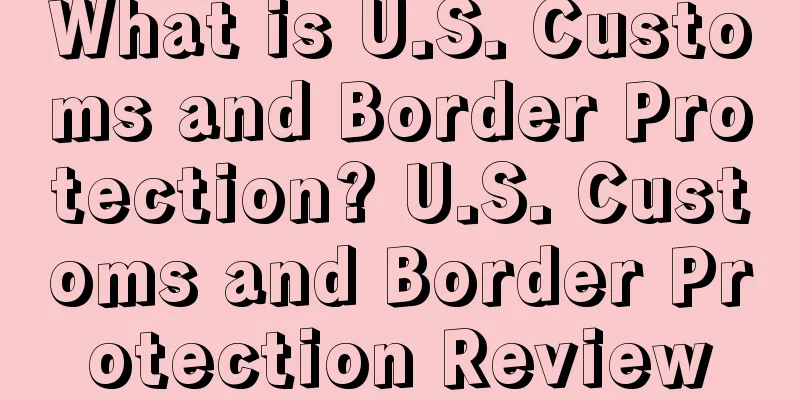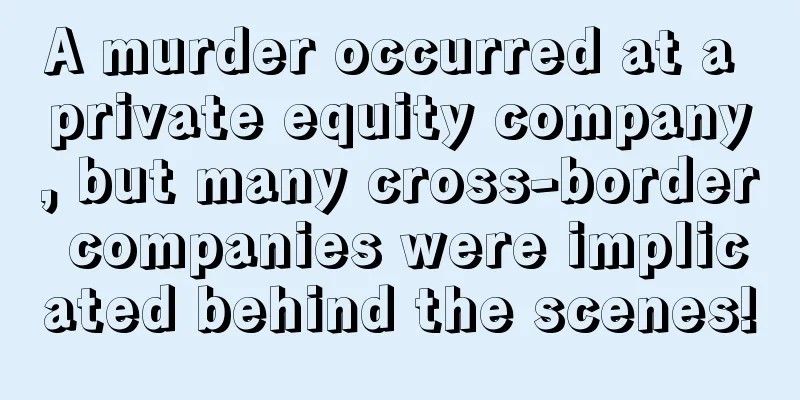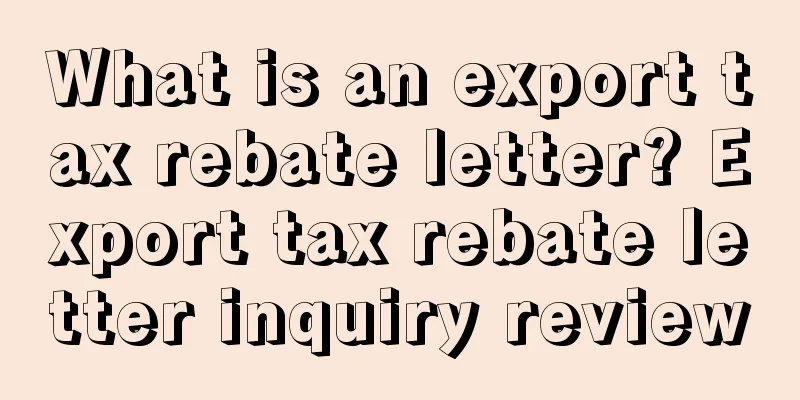What is U.S. Customs and Border Protection? U.S. Customs and Border Protection Review

|
The U.S. Customs and Border Protection (CBP) is a federal law enforcement agency of the U.S. Department of Homeland Security. Founded on March 1, 2003 Office address Ronald Reagan Building Washington, DC, US Official website https://www.cbp.gov/ Introduction U.S. Customs and Border Protection is headquartered in Washington, D.C. The agency is responsible for collecting tariffs and enforcing U.S. trade, customs, and immigration laws. As the largest law enforcement agency in the United States and the main investigative agency under the Department of Homeland Security, the Customs and Border Protection Agency has the following responsibilities: cutting off terrorist financing, combating money laundering, combating illegal arms sales, combating immigration fraud and human trafficking, detaining and deporting foreign criminals and other foreigners that the United States believes should be deported, curbing the flow of drugs and other contraband, protecting the United States' economic interests from losses, and protecting the intellectual property of American companies from being stolen. Its predecessor was the United States Customs Service. history Responding to the urgent need for revenue following the Revolutionary War years, on July 4, 1789, President George Washington signed and the U.S. Congress passed the Tariff Act, authorizing the collection of taxes on imported goods. Four weeks later, on July 31, the Fifth Act of Congress established the United States Customs Service. For nearly 125 years, the U.S. Customs Service was the primary source of funding for the entire government and paid for the nation's early growth and infrastructure. The Purchase included the territories of Louisiana, Florida, Alaska, and Oregon; funding for the construction of national roads and transcontinental railroads; many of America's lighthouses; military and naval academies, and the District of Columbia. Immigration and Naturalization Services Soon after the American Civil War, some states began passing their own immigration laws, prompting the U.S. Supreme Court to rule in 1875 that immigration control was the responsibility of the federal government. The Immigration Act of 1891 established an Office of Immigration Control in the Treasury Department of the U.S. Department of Commerce. This office was responsible for admitting, denying, and processing all immigration requests and enforcing the nation's immigration policies. They were called immigration inspectors, and were stationed at the major ports of entry in the United States to collect manifests from arriving passengers. A head tax of 50 cents was collected for each immigrant. In the early 20th century, Congress's primary interest in immigration was to protect American workers and wages, which had become a federal concern in the first place. This made the issue of income/business taxes on immigrants more of a problem. In 1903, Congress transferred immigration affairs to the newly created Department of Commerce and Labor. After World War I, faced with a surge of immigration, primarily from Europe, Congress passed laws in 1921 and 1924 that limited the number of new arrivals, allocating a quota to each nationality based on its representation, according to figures from previous U.S. censuses. Each year, the U.S. Department of State issued a limited number of visas; only those who had valid visas were allowed entry. In 1940, President Roosevelt proposed moving the Immigration and Naturalization Service from the Department of Labor to the Department of Justice. Restructuring (2003 to present) On March 1, 2003, U.S. Customs and Border Protection officially became an agency of the U.S. Department of Homeland Security, combining employees of the U.S. Department of Agriculture, the U.S. Immigration and Naturalization Service (specifically Immigration Inspections and the U.S. Border Patrol), and the U.S. Customs Service. CBP officers are equipped with 9mm Glock 17 and .40 caliber HK P2000 semi-automatic pistols, telescopic batons and rosin pepper spray. They are trained at the Federal Law Enforcement Training Center and enforce more than 450 laws. CBP officers have full arrest powers. Criminal cases seized by CBP are investigated by its sister agency, U.S. Immigration and Customs Enforcement. Because CBP officers perform the duties of law enforcement officers, they are eligible for retirement benefits paid by law enforcement according to the 2008 federal budget. However, officers outside the United States do not have the power to arrest or search, are not law enforcement officers, and are not armed. Organization The main agencies under the Customs and Border Protection Bureau include: the Field Operations Division, which has 20 field operations departments, 331 entry ports, and 15 pre-inspection stations in Canada and the Caribbean. Its main tasks are to protect border security, inspect passengers, manage trade risks, enforce the law, detain and punish goods and personnel, etc. Border Patrol, whose mission is to prevent terrorists and weapons from entering the United States, and to enforce U.S. immigration laws to arrest illegal immigrants or smugglers; Air and Maritime Division, whose mission is to use air and sea forces to intercept and prevent terrorist incidents, protect the safety of the American people and important national facilities, and prevent illegal persons, drugs and other contraband from flowing into the United States or passing through the U.S. border; International Trade Division, whose function is to strengthen trade policy, guide law enforcement actions in intellectual property protection and promote trade through cooperation with international partners and other U.S. agencies; Information Technology Division, which is mainly responsible for automatic information systems, management and functional development of the agency's experimental facilities; Management Division, which has a wider range of responsibilities and is mainly responsible for financial management, including accounts, budgeting, logistics, policy formulation, etc.; Training and Development Division, which is responsible for guiding all training programs of the Customs and Border Protection Agency, implementing career improvement programs, and basic and advanced training courses for all professions (such as counterterrorism training); Domestic Affairs Division, Intelligence and Investigation Liaison Division, is a reorganization of the Intelligence and Operations Division and merged with the former Intelligence and Counterterrorism Division. Under the conditions of making full use of the Advanced Passenger Information System, the U.S. Visitor and Immigrant Status Display Technology, and the Student and Exchange Visitor System (SEVIS), Customs and Border Protection evaluates all passengers entering the United States from the air to screen for terrorist risks. At the same time, Customs and Border Protection also cooperates with the U.S. Food and Drug Administration to screen high-risk imported foods to prevent the invasion of bio-terrorism and agricultural terrorism into the United States. At 58 ports around the world, CBP works with counterparts in receiving countries to conduct container security inspections to identify containers that pose a threat at foreign ports of departure and prevent them from reaching the United States. NEXUS is a secure electronic network system for rapid screening of travelers from Mexico through designated channels. NEXUS is a fast border inspection procedure specifically for low-risk, pre-approved individuals entering Canada and the United States. The U.S. Customs and Border Protection and the Canadian Border Services Agency (CBSA) work together in this regard to ensure border security while streamlining cross-border procedures. NEXUS members have priority at land, sea and air ports of entry. Under the Western Hemisphere Travel Program, NEXUS cards have been identified as a passport substitute for U.S. and Canadian citizens entering the United States at air, land and sea ports. The NEXUS program allows travelers to enter the country in three ways - through a dedicated channel at a designated northern port of entry, a NEXUS inspection counter at a Canadian pre-clearance airport, and a marine reporting location, after being inspected by U.S. and Canadian officials. Approved applicants can be given an approved proximity radio frequency identification card with a photo. Passengers can either show their NEXUS card or undergo an iris scan when passing through the above three channels. NEXUS allows U.S. and Canadian border agencies to focus their efforts on potentially high-risk passengers and cargo to better ensure border security and integrity. Law enforcement authority CBP has the authority to search vehicles transported in and out of the country. Section 596 of the Tariff Act requires CBP to seize and impose penalties on all goods that are stolen, smuggled, or illegally imported. CBP also seizes and imposes penalties on controlled chemicals, certain contraband, and plastic explosives that do not contain detectable agents. In collaboration with the State Department and the Census Bureau, the Export Electronic Information System's deadline information is used to identify goods that may pose a threat. CBP has the power to impose civil penalties, the legal basis of which is Section 592 of the Tariff Act of 1930. This section provides for penalties for persons who import, attempt to import, or assist or falsify or defraud to obtain documents or reports, and classifies the penalties (mainly three types: fraud, gross negligence, and negligence). CBP also has the power to impose criminal penalties, and those who provide false information to customs officials may be sentenced to up to two years in prison, a fine of $5,000, or both for violating import regulations. |
<<: What is NiuBay Cross-border ERP? NiuBay Cross-border ERP Review
>>: What is Cyprus Customs? Cyprus Customs Review
Recommend
The US holiday season consumption boom has come early! How can sellers seize the opportunity?
It is learned that although summer is not complete...
What is Youfen? Youfen Review
Youfen is a SCRM system that provides a one-stop s...
Amazon adds new performance! If the performance exceeds 5%, the store may be closed!
European sellers recently received an official em...
Sellers fall into money laundering scam! Sellers who need to clear out their stock after Black Friday, please take note! (Heavy benefits included)
Get free benefits at the end of the article Durin...
As the epidemic escalates, Shenzhen sellers are shipping goods overnight! Work from home mode is on!
▶ Video account attention cross-border navigation ...
What is MeiGuang? MeiGuang Review
MeiGuang focuses on short video social e-commerce ...
What is Amazon Fresh? Amazon Fresh Review
Amazon Fresh, Amazon's fresh food service, all...
Domestic freight to the UK for sale? Cross-border sellers should pay attention to the new VAT regulations starting in 2021!
Sellers engaged in cross-border e-commerce know th...
Advertising data bug during Black Friday and Cyber Monday! Super low ACOs induce sellers to increase budget?
In the past two days, when many sellers checked th...
What is chuangtengdata? chuangtengdata review
chuangtengdata mainly provides Amazon sellers with...
Amazon sellers rely on misplaced categories to grab BS? Sales of peers plummeted by 50% during peak season!
This year's peak season is still plagued by pr...
What is Fuyou Payment? Fuyou Payment Review
Fuyou Payment is a service provider focusing on va...
Mercado Libre is the preferred online shopping platform for Mexicans! Amazon ranks second!
<span data-shimo-docs="[[20,"获悉,根据联邦电信研究所(...
Reaching the peak brings fame and fortune, and falling into the valley allows you to grow! The low period of the past year has taught me a truth: what operations need to do is to find your users and products and go with the flow!
Anonymous user My C position When people are in hi...
What is Alibaba AI real-time translation? Alibaba AI real-time translation review
On May 18, 2018, Alibaba officially launched the r...









